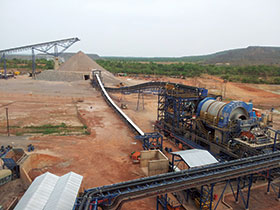

Electrical contractors are often disadvantaged – both operationally and financially – when their planned contribution to a construction or engineering project is disrupted, but are seldom able to claim compensation for their losses. Disruption to contractors is becoming an even more common occurrence as a result of budget cost-cutting on projects, resulting in inadequate engineering and lack of planning early on in the project.
Disruption comes from many sources
According to Russell Drake, general manager operations at Zest WEG Group company EnI Electrical, disruption occurs when a disturbance or hindrance interrupts the normal working methods of the electrical contractor, reducing their productivity on site.
“When a contractor bids for work, their price is based on a scope of works in a clearly defined environment, where the employer’s guidelines and rules are clearly defined,” says Drake. “The contractor expects to carry out the work in terms of a specific set of norms that determine each unit installation rate.”
This rate is set in line with the ‘bill of quantities’ for rateable works, which are industry norms; the price that is estimated assumes that production will be continuous, in other words, it makes no provision for disruption.
“This tender price also assumes that the management and supervision team performs in the manner necessary to complete the project with the operational resources allocated over a period of time,” he says. “This role is carried out according to the ‘direct field labour’ planned for the project.”
In theory, there is recourse to the employer for compensation when disruption leaves the contractor out of pocket, if the expense resulting from the contractor’s loss of productivity is caused by disruption events for which the other party is contractually responsible.
“The problem is that many of the factors behind lower-than-anticipated productivity do not justify a legal claim for compensation for disruption,” says Drake. “These include poor supervision or planning, rework due to defects, or the inadequate coordination of subcontractors.”
EnI Electrical highlights, for instance, the negative effects of piecemeal access to the work site, where access ‘on the ground’ does not match the access projections promised by the employers. This disrupts the production environment and destroys the validity of the assumptions contained in the original guidelines and rules of the contract – placing the contractor in a difficult position.
“If the access is forecast to be delayed for some time, the contractor may choose to terminate their excess labour, but this is not often done due to the cost, time and effort,” says Drake. “Another option is to remove the surplus labour from the site, and submit a claim for standing time; the danger here is that some progress is lost, and at a higher cost to the contractor and indirectly, the employer.”
He also points out that the labour force could become negative when some have to work and others stand idle: “The option often taken by the contractor is to continue applying their resources as best they can, in an attempt to meet the employer’s completion dates. However, the process is inefficient and costs more than what the contractor provided for in their tender.”
So, while it is possible for a contractor to demonstrate where disruption of their work has occurred – by applying analytical methods and techniques to quantify the financial loss – they will often delay the disruption claims in an effort to maintain the relationship with the employer. Unfortunately, this can result in even more disputes.
Transparency and ethics are key
“Electrical contractors who rely solely on relationships with their customers can become exposed to contractual risks and lose revenue as result of disruptions,” says Drake. “The risks are exacerbated if the client and contractor do not timeously identify and agree on the
impact of potential disruption. The longer the delay, the greater the risk to the contractor’s profitability and the client meeting its
completion dates.”
EnI Electrical, as a contractor, is committed to transparency and to manage the ‘inevitable scope changes’ where these are exploited by many contractors to benefit financially. The company is working to transform the culture of the local contracting fraternity, and spends significant time and effort in empowering its teams with strong business and ethical leadership.
The company’s results tell their own story: EnI Electrical has recorded growth rates of over 400% since 2010, and enjoyed record revenues in 2015 when most of the economy was struggling. As importantly, it based its success on customer satisfaction, as about 60% of its work is generated by repeat business.
For more information contact Kirsten Larkan, Zest WEG Group Africa, +27 (0)11 723 6000, [email protected], www.zestweg.com
| Tel: | +27 11 723 6000 |
| Email: | [email protected] |
| www: | www.weg.net |
| Articles: | More information and articles about WEG Africa |

© Technews Publishing (Pty) Ltd | All Rights Reserved